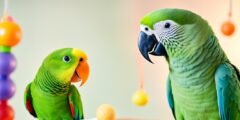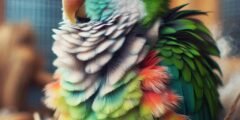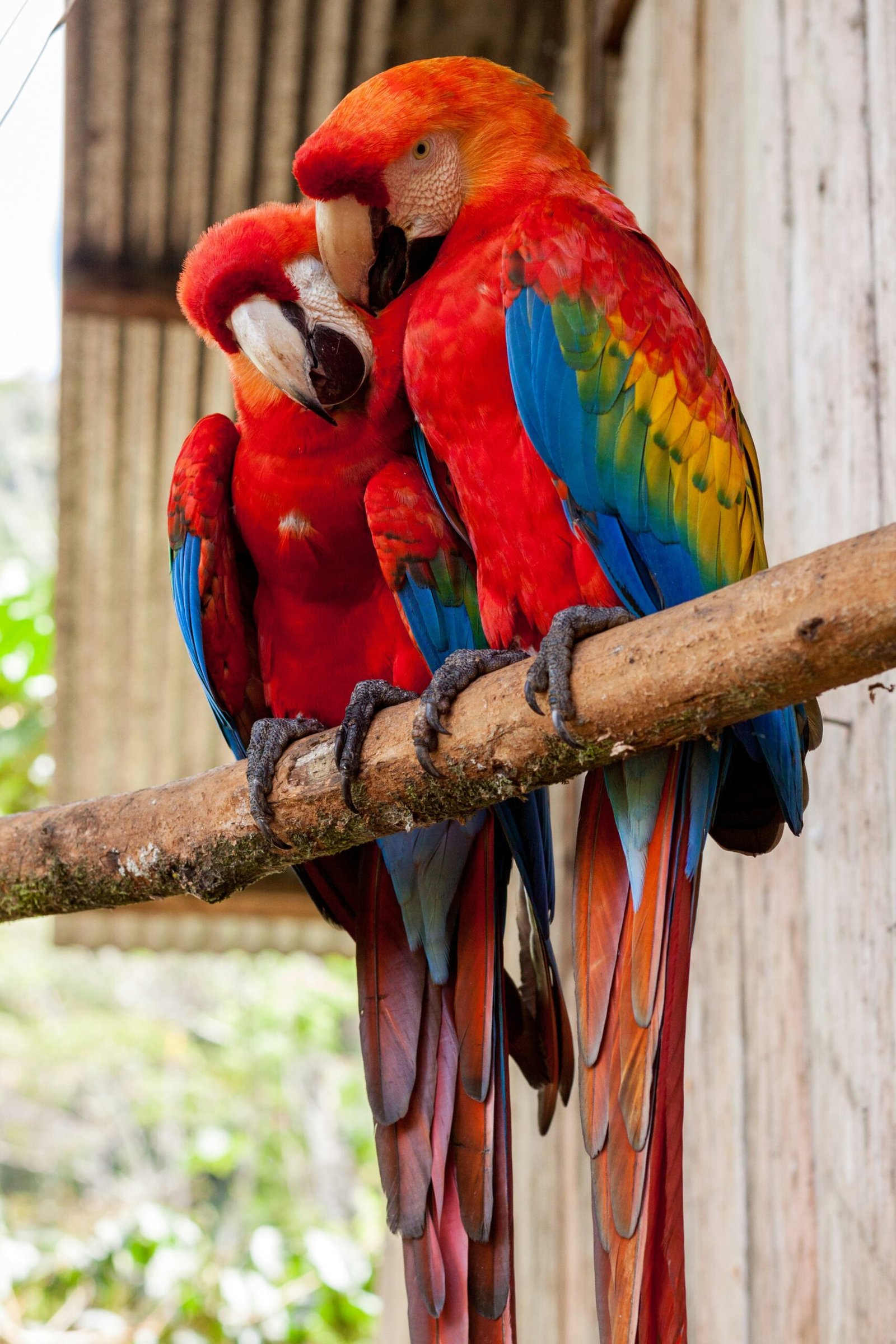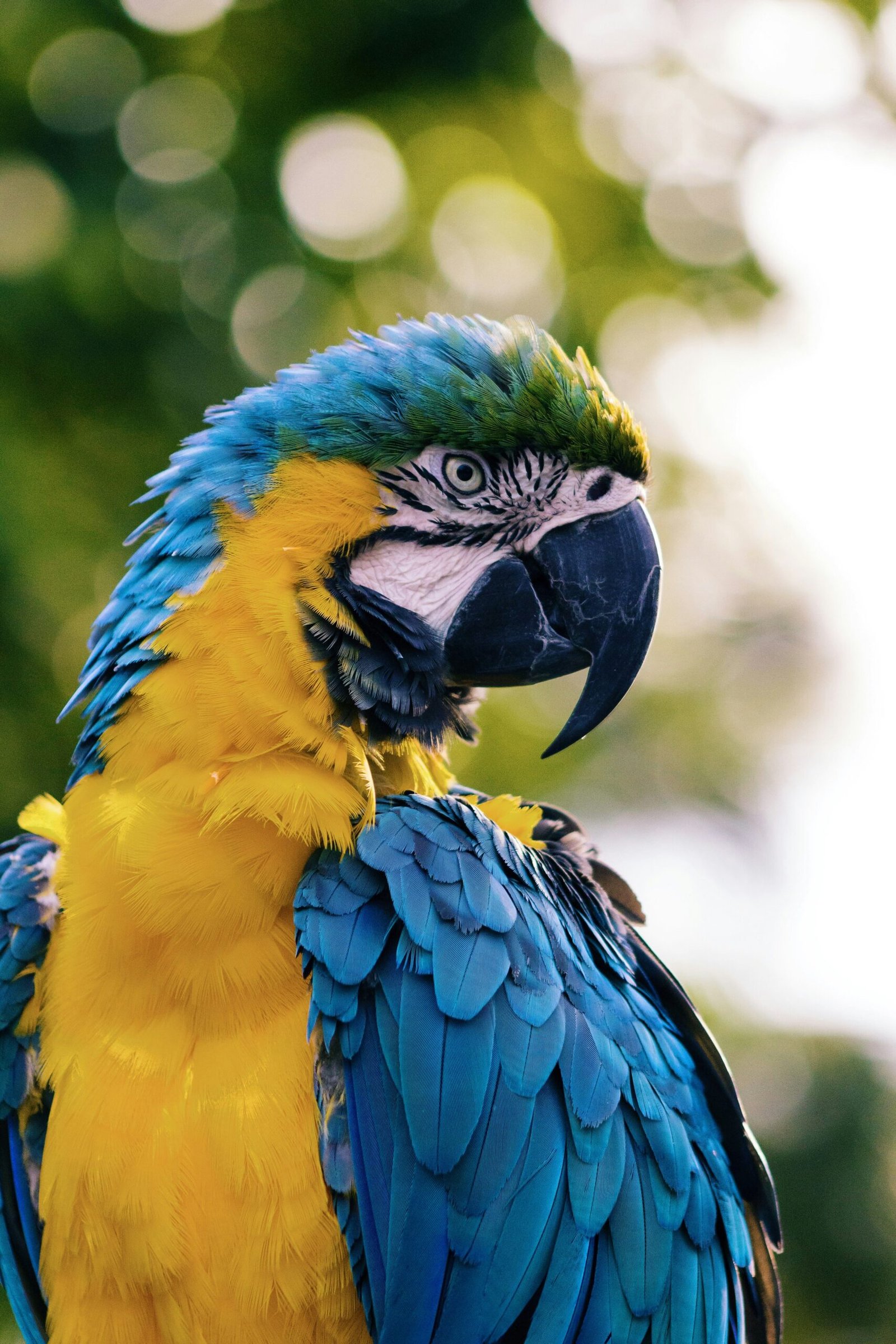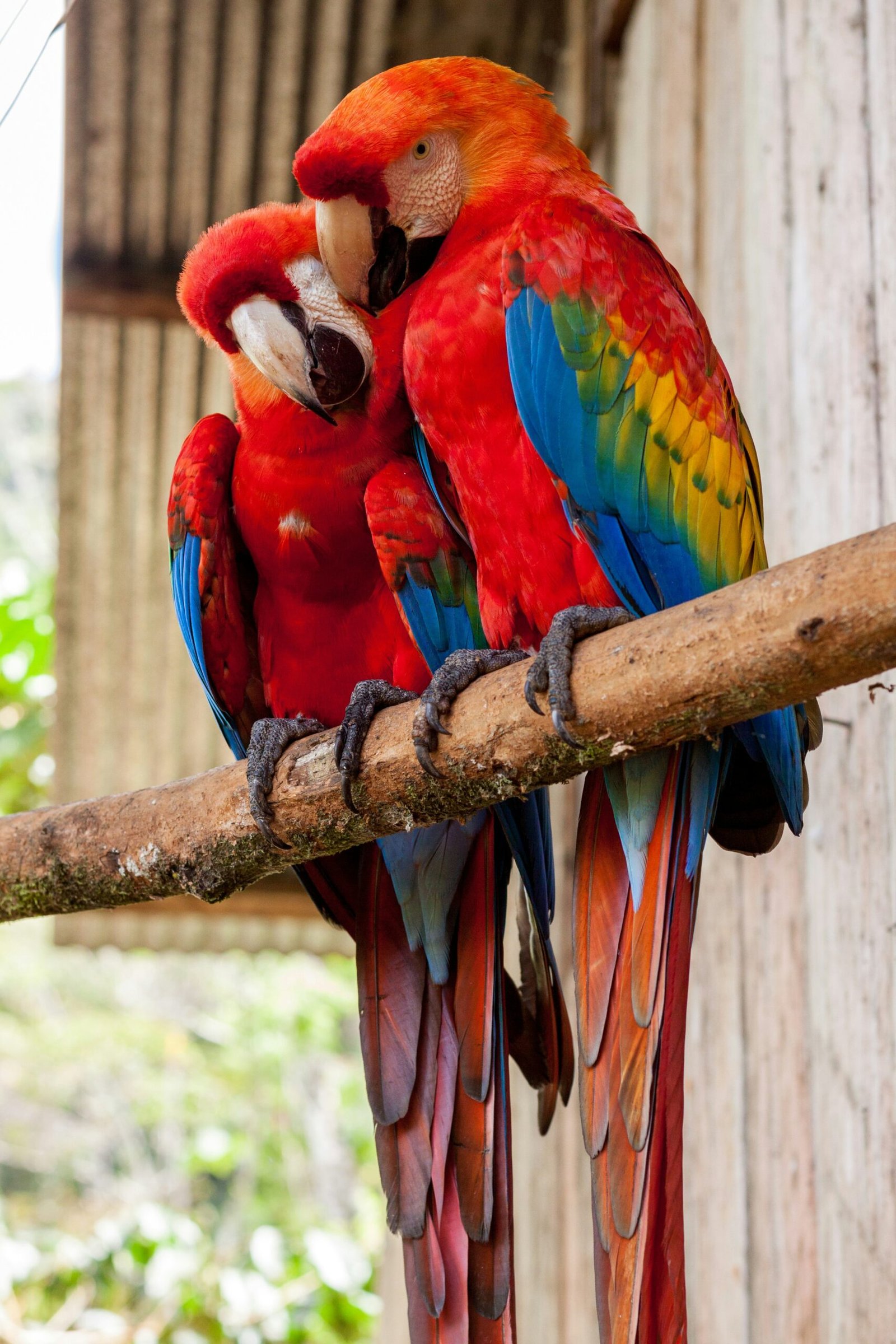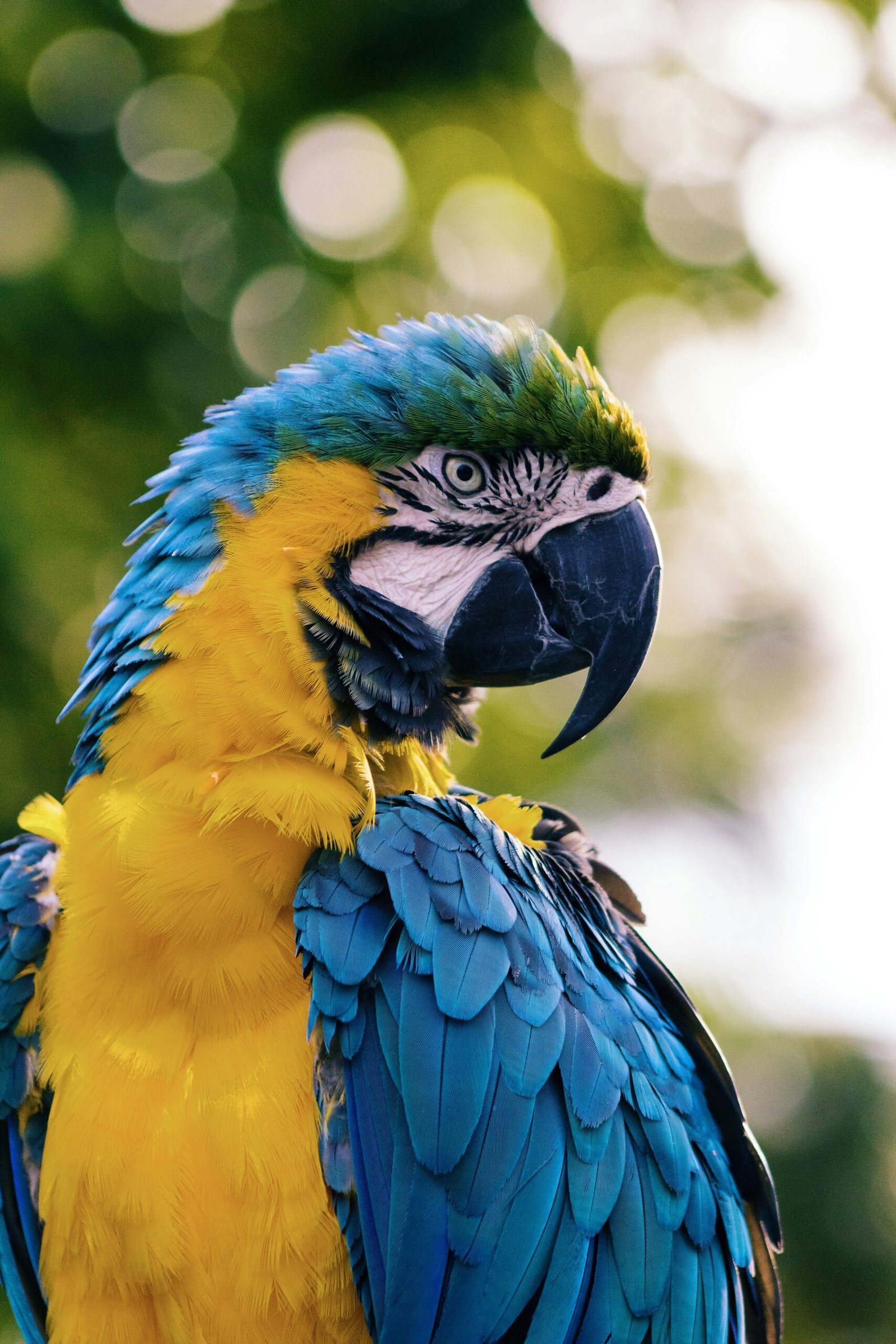Training a Quaker parrot can be a highly rewarding experience, both for the bird and its owner. Understanding at what age you can start training your Quaker parrot is crucial for ensuring effective learning and a strong, healthy bond. Early training can lead to improved behavior, mental stimulation, and a more harmonious relationship between you and your feathered friend.
This blog post aims to provide comprehensive insights into the optimal age to begin training your Quaker parrot. We will explore the developmental stages of Quaker parrots, the benefits of early training, and the types of training suitable for different ages. By the end of this post, you will have a clear understanding of when and how to start training your Quaker parrot to achieve the best results.
Understanding Quaker Parrot Development Stages
Quaker parrots, also known as Monk parakeets, go through several distinct developmental stages from hatching to adulthood, each marked by key milestones that influence their readiness for training. Understanding these stages is crucial for effective training and the overall well-being of your bird. The early stages of a Quaker parrot’s life are critical, as they lay the foundation for future learning and behavior.
The first stage is the neonatal period, which lasts from hatching until around two weeks of age. During this time, the chicks are completely dependent on their parents for feeding and warmth. Their eyes are closed, and they are unable to regulate their body temperature. By the end of this stage, the chicks begin to open their eyes and show increased activity.
Following the neonatal period is the nestling stage, which spans from two weeks to around six weeks of age. In this phase, Quaker parrot chicks grow rapidly, developing feathers and becoming more alert and responsive to their environment. They start to practice basic motor skills, such as flapping their wings and preening. This is a crucial period for socialization, as the chicks learn important behaviors from their parents and siblings.
The fledgling stage occurs between six weeks and three months of age. During this time, young Quaker parrots start to explore their surroundings more actively and develop their flying skills. They begin to eat solid food and become more independent from their parents. This stage is characterized by a high level of curiosity and a willingness to learn, making it an ideal time to introduce basic training.
Finally, the juvenile stage extends from three months to around one year. Juvenile Quaker parrots continue to grow and mature, both physically and mentally. They become more adept at problem-solving and communication, which enhances their capacity for more advanced training. By the end of this stage, they reach sexual maturity and exhibit adult behaviors.
Understanding these developmental stages helps determine at what age you can start training your Quaker parrot. Early socialization and gradual introduction to training during the fledgling and juvenile stages can lead to a well-adjusted and well-trained adult parrot. For more comprehensive information on parrot development stages, you can refer to this reputable source on parrot development stages.
Ideal Age to Start Training
Understanding the ideal age to start training your Quaker parrot is crucial for successful behavior modification and learning. Typically, the optimal age to begin training a Quaker parrot is around 3 to 6 months old. During this period, the parrot is still very young and impressionable, making it easier to establish foundational behaviors and routines.
At this age, Quaker parrots are in a critical stage of cognitive development. Their brains are highly receptive to new experiences and learning, which allows for faster assimilation of training cues and commands. Just like young children, young parrots are more adaptable and open to new skills. Training during this early stage can help instill positive behaviors and mitigate potential issues that might arise if training is delayed.
Socialization is another key factor to consider. Quaker parrots, being highly social creatures, benefit greatly from early interactions with their human caregivers. Early training facilitates stronger bonds between the parrot and its owner, fostering trust and cooperation. This bond is essential for effective training and long-term harmony in the household.
Comparatively, other parrot species also show better training outcomes when started at a young age. For instance, African Grey parrots and Amazon parrots similarly benefit from early training, typically around the same age range of 3 to 6 months. The young, adaptable nature of these parrots makes them more receptive to learning, much like Quaker parrots.
To gain deeper insights into the best age to start training parrots, consider exploring expert opinions on the subject. Renowned avian behaviorist Dr. Irene Pepperberg provides valuable guidance on the developmental stages of parrots and their training needs. Read more from Dr. Pepperberg here.
Early Socialization and Its Importance
Early socialization plays a pivotal role in the holistic development of a young Quaker parrot. This foundational stage is essential not only for the bird’s emotional well-being but also for its ability to learn and adapt to training later on. When contemplating at what age can I start training my Quaker parrot, it is vital to understand that socialization should begin as early as possible.
One of the primary techniques for early socialization involves gentle handling. From the moment the bird is weaned, consistent, gentle interaction helps build trust and familiarity. Using soft tones and slow movements while handling the parrot can mitigate stress and encourage a positive association with human touch.
Exposure to various environments is another critical aspect of socializing a young Quaker parrot. Gradually introducing the bird to different settings, sounds, and sights can help it become more adaptable and less fearful of new experiences. These exposures should be conducted in a controlled manner to avoid overwhelming the bird. For instance, starting with quiet rooms and progressively introducing more dynamic environments can be effective.
Additionally, incorporating socialization into daily routines is beneficial. Activities such as talking to the parrot regularly, allowing it to observe household activities, and even short, supervised forays outside its cage can stimulate its curiosity and comfort with its surroundings. These practices not only foster a sense of security but also lay the groundwork for more advanced training.
Socialization is not a one-time event but a continuous process that extends into the parrot’s adulthood. Consistent, positive interactions during the early stages can significantly influence the bird’s temperament and receptiveness to training. For a more comprehensive understanding of socialization techniques, you can refer to this guide on parrot socialization techniques.
Basic Training Techniques for Young Quaker Parrots
Training a young Quaker parrot can be a rewarding experience, fostering a strong bond between you and your feathered friend. The question often arises: “At what age can I start training my Quaker parrot?” Ideally, training should commence as soon as your Quaker parrot is weaned and comfortable in its new environment, usually around 3 to 4 months of age. Starting early can help instill positive behaviors and make the training process smoother.
One of the most effective methods for training young Quaker parrots is positive reinforcement. This technique involves rewarding your parrot for performing desired behaviors. Rewards can include treats, verbal praise, or gentle petting. For instance, if you want your parrot to step up onto your finger, offer a small treat each time it complies. Consistency and patience are key to success with positive reinforcement.
Clicker training is another popular and efficient method. This technique uses a small device that makes a clicking sound to signal to your parrot that it has performed the correct behavior. Begin by “charging” the clicker: click it and immediately give your parrot a treat. Repeat this several times until your parrot associates the click with a reward. Next, you can use the clicker to mark specific behaviors, such as stepping up, and follow it with a treat. Clicker training is particularly effective because it provides clear and immediate feedback to your parrot.
Target training is also beneficial for young Quaker parrots. This method involves teaching your parrot to touch a designated target, such as a stick or pointer, with its beak. Start by presenting the target near your parrot and rewarding it for any interaction with the target. Gradually increase the distance and complexity of the tasks. Target training can be an excellent way to teach your parrot to move to different locations on command.
For a more in-depth guide on clicker training, you can refer to this clicker training tutorial for parrots.
Remember, the age at which you start training your Quaker parrot can greatly influence their learning process. Early and consistent training using positive reinforcement, clicker training, and target training can set a solid foundation for a well-behaved and happy parrot.
Common Training Challenges and Solutions
Training a young Quaker parrot can present several challenges, such as biting, fearfulness, and lack of attention. Understanding and addressing these issues early can significantly improve the training experience for both the parrot and the owner.
One of the most common challenges is biting. Young Quaker parrots may bite due to fear, curiosity, or territorial behavior. To mitigate this, it is crucial to handle the bird gently and consistently. Positive reinforcement techniques, such as offering treats or praise when the bird does not bite, can be highly effective. Additionally, avoiding sudden movements and loud noises can help reduce the bird’s stress levels.
Fearfulness is another common issue. Quaker parrots are naturally cautious and can be easily frightened by new environments or unfamiliar people. Gradual acclimatization is key; start by placing the bird’s cage in a quiet area and slowly introduce new stimuli. Spending time near the cage without direct interaction initially can also help the bird feel more secure. Employing a calm and reassuring tone when speaking to the parrot can further ease its fear.
Lack of attention or difficulty in maintaining focus during training sessions can also be challenging. Quaker parrots, like many birds, have short attention spans. Keeping training sessions brief, around 5-10 minutes, and consistently incorporating breaks can enhance the bird’s ability to concentrate. Using a variety of toys and interactive activities can also keep the training engaging and stimulating for the parrot.
For further insights and shared experiences about training Quaker parrots, joining a community forum can be invaluable. Engaging with other parrot owners who have faced similar challenges can provide additional strategies and moral support. One such community can be found at [Parrot Forum](https://www.parrotforum.com).
Advanced Training for Mature Quaker Parrots
As Quaker parrots mature, their training can evolve to include more advanced techniques. While basic training might focus on simple commands and behaviors, advanced training for mature Quaker parrots can encompass complex tricks and more intricate commands. The cognitive abilities of these intelligent birds allow for a wide range of training possibilities that can both challenge and stimulate them.
One of the key aspects of training a mature Quaker parrot is to build on the foundational skills they have already acquired. This might include teaching them to perform multi-step tricks, such as fetching an object and bringing it to you, or even learning to mimic more complex sounds and phrases. The process of teaching these advanced skills should be gradual and patient, ensuring that the parrot remains engaged and positive throughout the training sessions.
Mental stimulation is crucial for adult Quaker parrots, as it helps prevent boredom and associated behavioral issues. Incorporating puzzle toys, foraging activities, and interactive games can keep their minds sharp and provide a sense of accomplishment. Additionally, introducing new environments and social interactions can further enhance their learning and adaptability.
Continued training can also include refining previously learned behaviors and ensuring they remain consistent. Positive reinforcement remains a cornerstone of effective training, with rewards such as treats, praise, and playtime being essential to motivate and encourage your parrot.
For more in-depth techniques and guidance on advanced training, it can be beneficial to consult resources from avian experts. An excellent starting point is this expert article on advanced parrot training, which provides valuable insights and step-by-step instructions for taking your Quaker parrot’s training to the next level.
Ultimately, the goal of advanced training is to foster a strong bond between you and your Quaker parrot, enhancing their quality of life and ensuring they remain happy, healthy, and engaged.
Health Considerations When Training Quaker Parrots
When considering at what age can I start training my Quaker parrot, it’s crucial to address the health aspects that play a significant role in the training process. A healthy Quaker parrot is more likely to be attentive, energetic, and receptive to training. Therefore, understanding and managing their health is fundamental.
First and foremost, a balanced diet is essential for your Quaker parrot. Their diet should include a mix of high-quality pellets, fresh fruits, vegetables, and occasional seeds. Proper nutrition supports their overall well-being and cognitive function, making them more responsive to training sessions. Avoid feeding them foods that are high in fat and sugar, as these can lead to health problems and decreased energy levels.
Regular exercise is another critical component of a Quaker parrot’s health. Ensure that your parrot has ample opportunities to fly and play. This physical activity helps to maintain their muscle tone and cardiovascular health, which in turn keeps them active and engaged during training. Providing them with toys and opportunities for mental stimulation can also aid in their physical and mental development.
Routine veterinary check-ups are imperative to monitor your Quaker parrot’s health. A vet can help you detect any underlying health issues that might affect your parrot’s ability to learn. Regular health screenings can catch problems early, ensuring that your parrot remains in peak condition. A healthy parrot is not only more willing to participate in training but also has a better attention span and learning capability.
Maintaining your Quaker parrot’s health is a multifaceted approach but is essential for successful training. For in-depth information on parrot health and wellness, you can refer to our comprehensive guide on parrot health and wellness.
Building a Strong Bond Through Training
Training your Quaker parrot is not just about teaching tricks or commands; it is a vital process that helps in building a strong, trusting bond between you and your bird. The best time to start training your Quaker parrot is when it is still young, ideally around the age of 3 to 6 months. At this age, the parrot is more adaptable and open to new experiences, making it the perfect time to start training. However, even older birds can be trained successfully with patience and consistency.
One of the first steps in building trust is through positive reinforcement. Rewarding your Quaker parrot with treats, praise, or gentle petting for following a command or performing a desired behavior creates a positive association. This method not only helps in training but also strengthens the bond between you and your bird. Simple activities such as teaching your parrot to step up onto your hand, target training, or even basic commands like “come” and “stay” can significantly enhance your relationship.
Interactive playtime is another excellent way to build a strong bond. Engaging your Quaker parrot in activities like fetch, foraging games, or puzzle toys stimulates their mind and keeps them entertained. This interaction fosters a deeper connection, as your parrot begins to see you as a source of fun and engagement. Additionally, spending quality time talking to your bird, reading aloud, or even singing can improve your bond, as Quaker parrots are known for their social nature and enjoy auditory stimulation.
For a deeper insight into how training can transform your relationship with your Quaker parrot, consider reading this case study. It provides real-life examples and personal stories of successful parrot-owner relationships, illustrating the profound impact that training and bonding activities can have.
FAQs About Training Quaker Parrots
When considering at what age can I start training my Quaker parrot, many owners have numerous questions. Below are some frequently asked questions along with detailed answers to guide you through the training process.
What is the best age to start training a Quaker parrot?
It’s ideal to begin training your Quaker parrot as soon as they are weaned and comfortable in their new environment, typically around 3-4 months old. Starting early helps in establishing good habits and a strong bond between you and your parrot.
How often should I train my Quaker parrot?
Short, consistent training sessions are most effective. Aim for 10-15 minutes sessions, 1-2 times per day. Over time, you can adjust the frequency based on your parrot’s responsiveness and attention span. Consistency is key to reinforcing the desired behaviors.
What role do treats play in training?
Treats are a powerful motivator when training Quaker parrots. Use small, healthy treats to reward desired behaviors immediately. This positive reinforcement helps your parrot associate good behavior with a pleasant outcome, making training more effective.
How should I handle setbacks during training?
Setbacks are a normal part of the training process. Remain patient and consistent, and avoid showing frustration. If your Quaker parrot seems stressed or unresponsive, take a break and try again later. Adjust your approach if necessary, ensuring it remains positive and rewarding.
Can older Quaker parrots be trained?
Yes, older Quaker parrots can still be trained, although it may require more patience and time. Establish trust and a routine first, then gradually introduce training sessions. Use positive reinforcement and be consistent to achieve the best results.
For more detailed information and additional questions, please visit our comprehensive FAQ page on parrot training.
Conclusion
Understanding at what age you can start training your Quaker parrot is crucial for ensuring a successful and enriching experience for both you and your feathered friend. Starting training at the appropriate age, typically around 3 to 6 months, allows you to harness the bird’s natural curiosity and adaptability. Early training sets a solid foundation, making it easier to instill good behaviors and prevent undesirable ones from becoming habits.
Remember, patience and consistency are key components of effective training. Quaker parrots are intelligent but can be stubborn, so steady, positive reinforcement will yield the best results over time. The benefits of training extend beyond mere tricks; it fosters a deeper bond between you and your bird, promotes mental stimulation, and ensures a well-behaved companion.
We encourage you to share your training experiences or pose any questions you might have in the comments section below. Engaging with a community of fellow Quaker parrot enthusiasts can provide valuable insights and support. For ongoing assistance and a wealth of resources, consider joining our dedicated Quaker parrot training community at Quaker Parrot Community.

